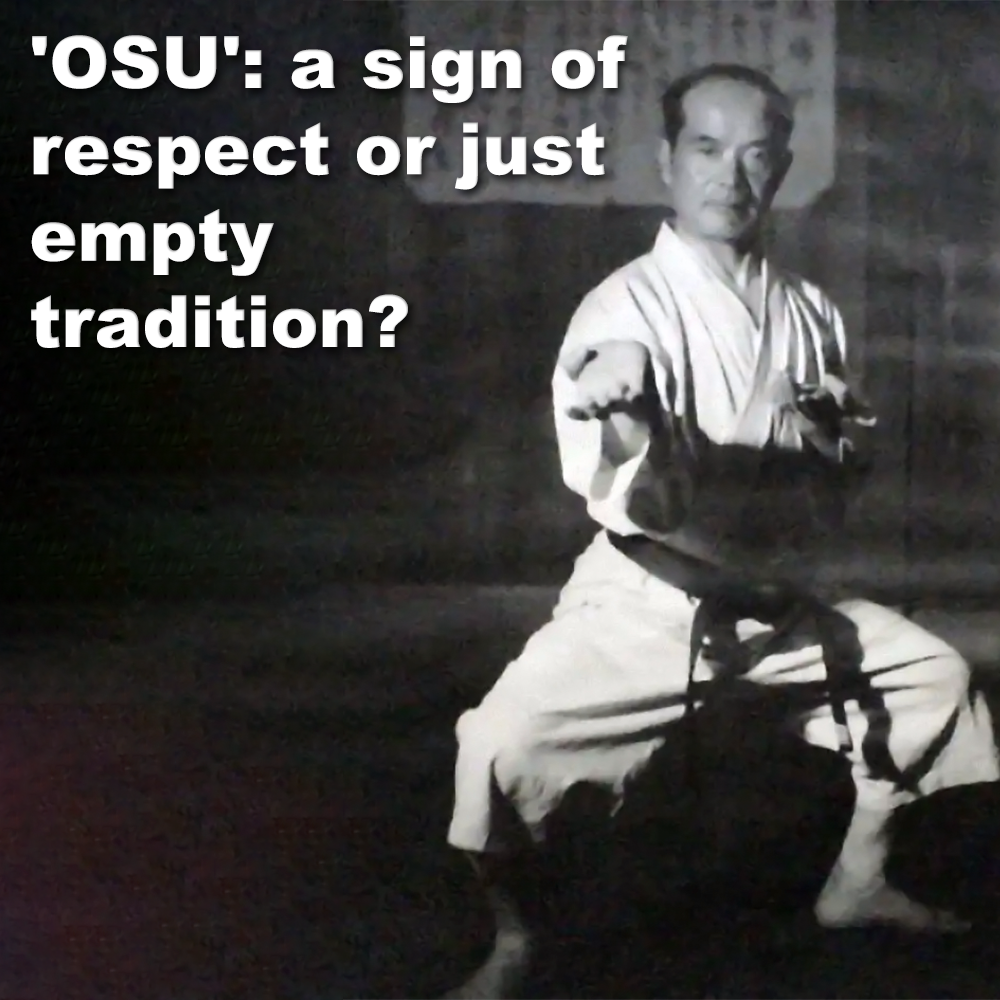
(2 minute 26 second read)
Do you use the term ‘Osu’ (押忍) in your dojo?
.
The resonant echo of ‘Osu’ that reverberates through many martial arts dojo, a word far more complex than its two syllables suggest.
.
This seemingly innocuous term, does it belong in our traditional dojo as a symbol of respect, or do you use it to mean something else?
.
While using ‘Osu’ serves as a familiar affirmation and acknowledgement within many dojo, its origins remain shrouded in ambiguity.
.
Some cling to their theories of its origins, suggesting contractions of Japanese phrases, others suggest historical evidence that seems to point towards the halls of the Japanese Imperial Navy Academy in the early 20th century.
.
And of interest, it’s missing from most dojo practicing Okinawan karate.
.
Should elements borrowed from external influences find their place in traditions they haven’t organically grown from, karate’s birthplace of Okinawa?
.
Beyond its disputed origins, ‘Osu’ carries layers of meaning and interpretation. From signifying understanding, to acknowledging an instruction from a sensei, to bowing as you enter or leave the dojo. Does its versatility make it a convenient linguistic tool?
.
Its historical association with aggressive masculinity though cannot be ignored. Perhaps this link presents a potential barrier for some individuals who don’t conform to traditional notions of the masculinity found in the martial arts, raising concerns about inclusivity and potentially creating an unwelcoming training environment.
.
The answer, as with most complex issues, is not a simple yes or no. Respecting established dojo traditions is vital, as they provide grounding and a sense of shared history.
.
However today, clinging blindly to practices that might unintentionally exclude or offend is detrimental to creating a truly inclusive and welcoming space for all practitioners.
.
However, I do understand in some schools, as an example, Kyokushin, use it substantially.
.
They interpret ‘Osu’ as a fusion of the terms ‘Oshi’, meaning “Push”, and ‘Shinobu’, meaning “to Endure”, signifying “to persevere amidst being pushed”.
.
There are of course a few other styles that like to use the term too, and for each of them it can have different meanings.
.
Although we don’t use the term in my dojo, the problem I see is that many practitioners seem to use it to mean everything and anything: “hello”, “goodbye”, “okay”, “thanks”, “excuse me”, “come here”, “do it this way”, “do you understand?”, and much, much more.
.
It’s also often used as a single word reply on a social media post, usually some weird misspelling of it (Oooozzz???)….. Why? What do you mean?
.
With such a broad range of interpretations, why not express your intended message clearly so that everyone can understand?
.
In my view, the dojo that do use the term, should delve into their specific lineage and examine the underlying reasons behind using it – knowledge is everything. When practicing an art form that employs aspects of its language to articulate actions within the dojo, it’s imperative to strive for accuracy. If a term seems unsuitable, there exist numerous alternative greetings or acknowledgements that might better suit the context.
.
As Aritomo Ito from Rockford Karate Dojo stated; “I’m a native Japanese and a Shotokan guy, but never use Osu/Oss. I was always taught to use proper words.”
.
For me, the use of the term seems part of an obsolete male language, perhaps slang, an expression of an ideological ‘budo’ closely related to ultranationalism, and militarism, and to be honest, I think the majority of practitioners have no idea why they are using it anyway.
.
.
‘OSU’: a sign of respect or just empty tradition?
.
.
Photo Credit: International Karatedo Gojuryu Senbukai
.
